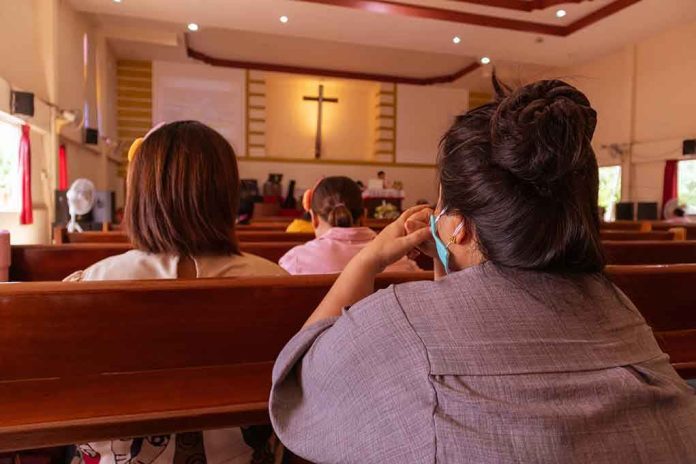
The Diocese of Buffalo’s $150 million abuse settlement forces innocent parishioners and staff to pay for decades of institutional failures through devastating levies and mass layoffs.
Story Highlights
- Diocese requires parishes to pay up to 80% of unrestricted cash to fund $150 million abuse settlement
- Mass layoffs announced at Catholic Center while parishioners face financial devastation
- Nine parishes file lawsuits against diocese, claiming survival threatened by payment demands
- Abuse survivor Kevin Brun condemns funding mechanism as punishing innocent faithful
Institutional Accountability Crisis
The Diocese of Buffalo reached a $150 million settlement in April 2025 to resolve bankruptcy proceedings stemming from nearly 900 sexual abuse claims filed since 2020. Bishop Michael W. Fisher announced that resolving this “painful chapter” requires participation from the “entire Catholic family,” effectively shifting financial responsibility from diocesan leadership to local parishes and staff. This approach undermines fundamental principles of institutional accountability by placing the burden on those who had no role in creating the crisis.
Under the settlement terms, parishes must contribute substantial portions of their unrestricted cash reserves, with some facing levies of up to 80% of available funds. Catholic affiliates also face mandatory contributions to reach the $80 million target from parish sources alone. The diocese simultaneously announced layoffs affecting Catholic Center staff, providing severance and health benefits only through September 2025, demonstrating how institutional failures cascade down to impact faithful employees and community members.
Community Resistance and Legal Challenges
Nine parishes have filed lawsuits to halt payment requirements, arguing these demands threaten their very existence and ability to serve their communities. Parish leaders describe the financial levies as “very scary” and warn of potential closures that would devastate local Catholic communities. The New York Supreme Court issued a temporary halt on parish payments pending Vatican review of disputed parish mergers, highlighting the complex legal battles surrounding this funding mechanism.
Kevin Brun, an abuse survivor and victims’ advocate, represents a growing voice of criticism against the settlement’s funding approach. Brun argues that mass layoffs and parish levies unfairly punish parishioners rather than holding those responsible for the abuse accountable. This survivor-led criticism exposes the ethical contradiction of seeking justice for past wrongs while creating new victims among faithful Catholics who supported their local communities.
Threats to Traditional Community Values
The Diocese’s approach undermines core conservative principles of individual responsibility and institutional integrity. By forcing parishes to deplete their resources, the settlement threatens the community-based support systems that have sustained Western New York families for generations. Local parishes provide essential social services, faith education, and community gathering spaces that strengthen traditional family values and neighborhood bonds.
This funding mechanism sets a dangerous precedent where institutional leadership escapes financial consequences while local communities bear the cost. The Vatican’s intervention in parish merger disputes and court challenges to payment demands demonstrate widespread recognition that this approach violates proper governance principles. As the September 1, 2025 deadline approaches for finalizing the bankruptcy plan, faithful Catholics face an uncertain future where their commitment to community may be punished rather than rewarded.
Sources:
Monetary Settlement Reached in Diocese of Buffalo Bankruptcy Case
Parishes will pay $80 million of Buffalo diocese’s $150 million bankruptcy settlement
New York Supreme Court halts payments to Buffalo abuse fund amid parish merger dispute
‘It would destroy these parishes’ Hearing held for parishes suing the Buffalo Diocese
Catholic Diocese of Buffalo announces layoffs and cost-cutting moves as part of bankruptcy process





